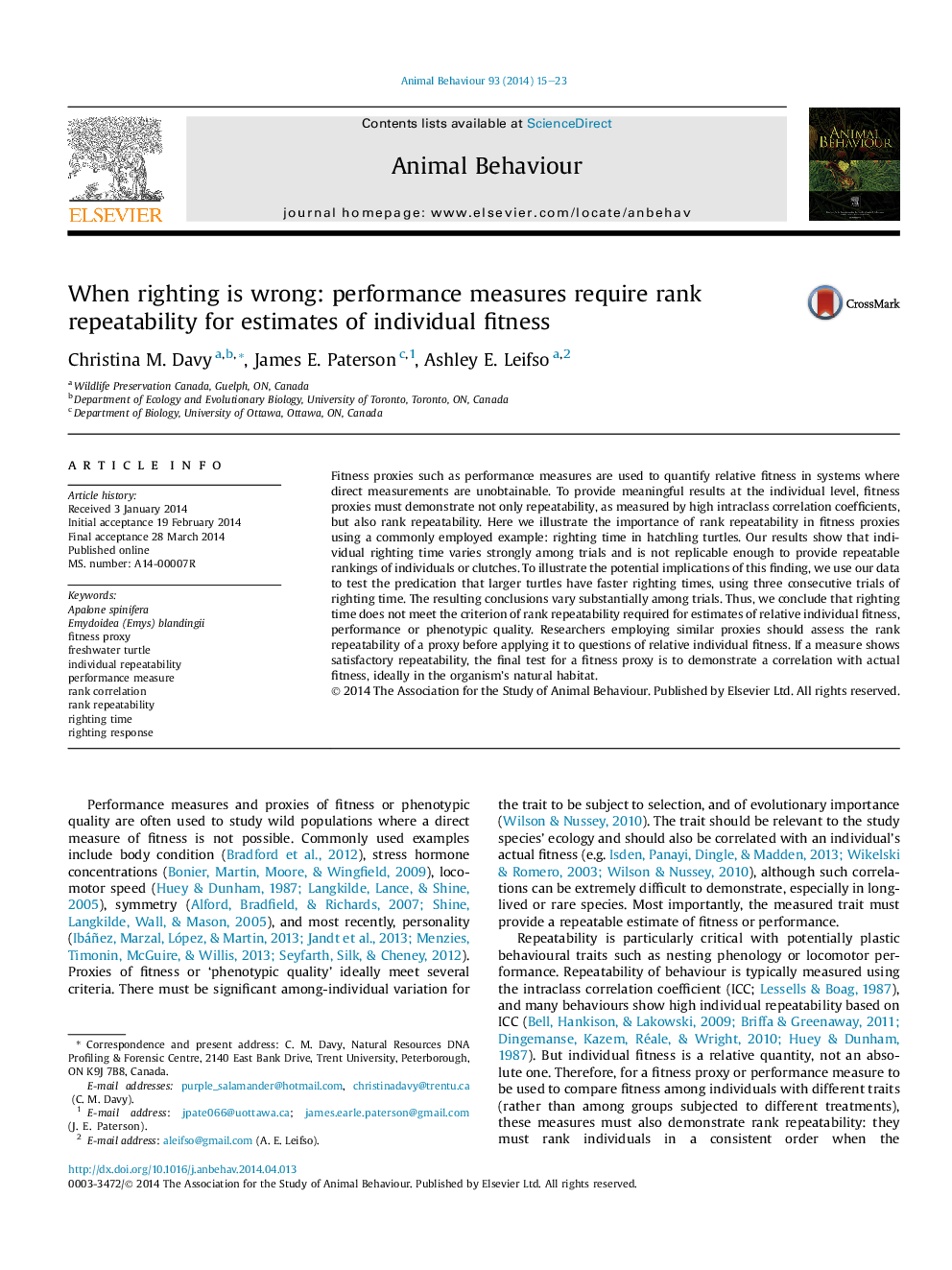| Article ID | Journal | Published Year | Pages | File Type |
|---|---|---|---|---|
| 8490418 | Animal Behaviour | 2014 | 9 Pages |
Abstract
Fitness proxies such as performance measures are used to quantify relative fitness in systems where direct measurements are unobtainable. To provide meaningful results at the individual level, fitness proxies must demonstrate not only repeatability, as measured by high intraclass correlation coefficients, but also rank repeatability. Here we illustrate the importance of rank repeatability in fitness proxies using a commonly employed example: righting time in hatchling turtles. Our results show that individual righting time varies strongly among trials and is not replicable enough to provide repeatable rankings of individuals or clutches. To illustrate the potential implications of this finding, we use our data to test the predication that larger turtles have faster righting times, using three consecutive trials of righting time. The resulting conclusions vary substantially among trials. Thus, we conclude that righting time does not meet the criterion of rank repeatability required for estimates of relative individual fitness, performance or phenotypic quality. Researchers employing similar proxies should assess the rank repeatability of a proxy before applying it to questions of relative individual fitness. If a measure shows satisfactory repeatability, the final test for a fitness proxy is to demonstrate a correlation with actual fitness, ideally in the organism's natural habitat.
Related Topics
Life Sciences
Agricultural and Biological Sciences
Animal Science and Zoology
Authors
Christina M. Davy, James E. Paterson, Ashley E. Leifso,
